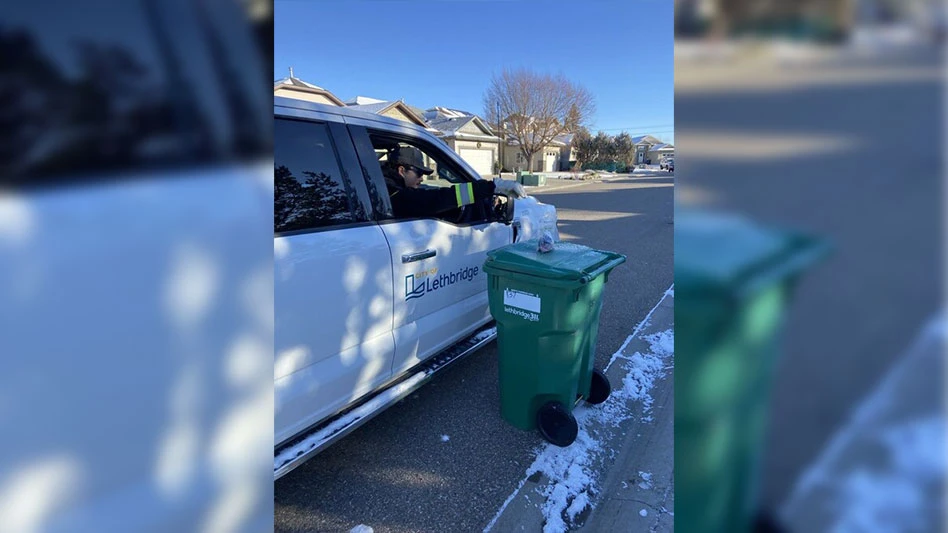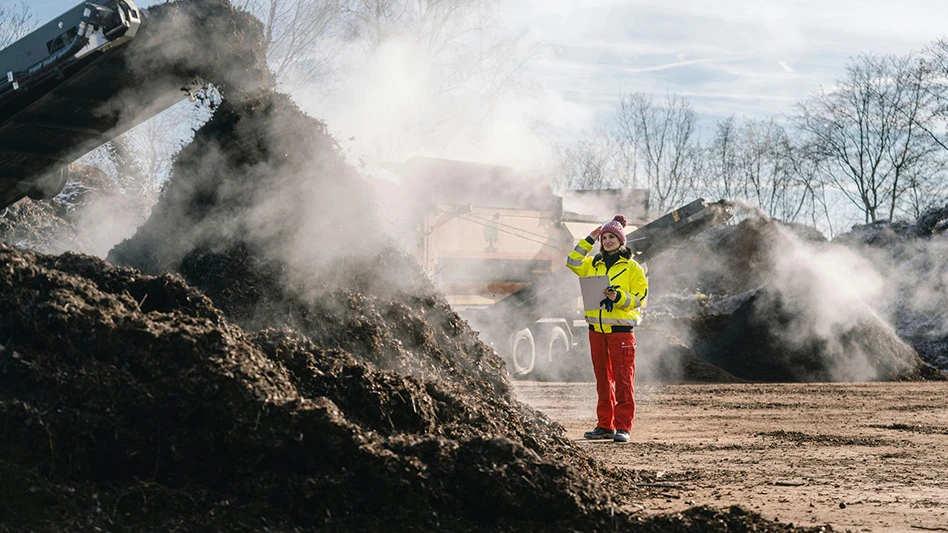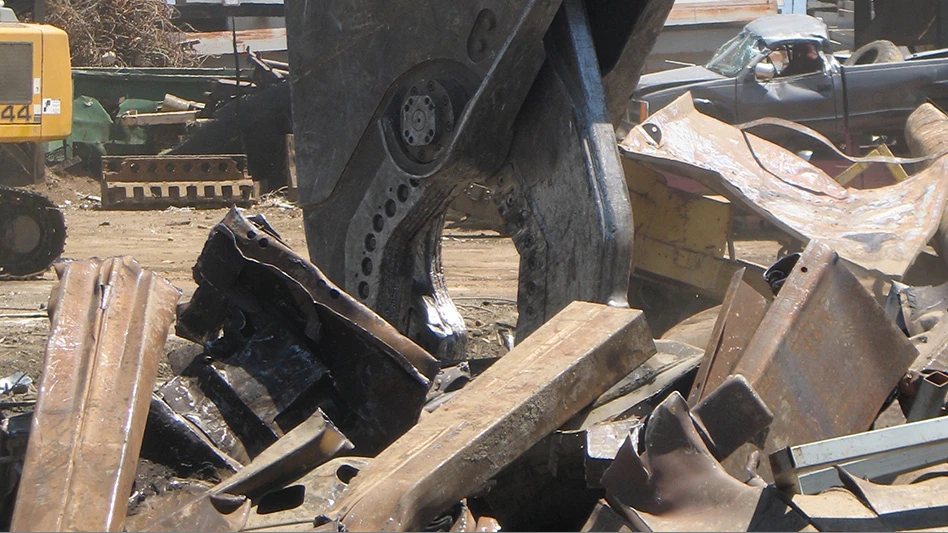While most scrap processors work to minimize the chaos, a backed-up loading or unloading zone can be the leading reason for a processor to consider a new layout at a processing facility.
An excess of trucks on the lot at any one time can be undesirable for a number of reasons. Frustrated truckers seeking an alternative route to a loading zone, an unloading zone or an exit can be a safety hazard. The accumulated noise and dust of too many trucks rumbling at the same time can also produce safety problems. And finally, a yard with a habit of providing truckers with long waits will gain a reputation among truckers as one to avoid.
IT STARTS WITH THE SCALES
As the scrap industry boomed along with the steel mini-mill industry in the ‘80s and ‘90s, many facilities were met with a mixed blessing. While revenues jumped, so did the need to invest in capital equipment. Right along with the processing and material handling equipment, it became clear to many processors that one truck scale was not going to be enough.
Dual scales have become increasingly common at larger facilities, and most processors have added scale capacity as it is needed.
The scale house overall can play a key role in keeping the truck traffic situation smooth. If the personnel there can put drivers on the right path and keep traffic moving, the yard becomes less chaotic.
As the scrap industry has grown, many facilities found themselves trying to fit more and larger operations onto a finite amount of land. The tight fit can cause problems, especially if the truck path through the yard has too many zones where only one truck can fit on the width of the path.
Word Spreads Fast On Slow yards
The trucking industry in North America is booming. Many trucking companies are having trouble retaining employees
as a tight labor market puts drivers, well, in the driver's seat. In general, drivers have the ability to avoid the most unpleasant assignments, especially if they are owner-operators of their own rigs.
Thus, the reputation of a facility as being one that causes aggravation for drivers can cause long-term problems for a business owner. And enough incidents of long waits, flat tires or sloppy loads will indeed cultivate such a reputation.
“Word gets out—definitely,” says John Ashman, a manager with American Backhaulers, Chicago. “We had a facility that we had a problem with where we had eight loads that needed to be delivered. And the drivers sat from six to eight hours. Obviously, these drivers were not going back to that site again.”
Carmen Mormino, executive vice president of Jack Gray Transport Inc., Gary, Ind., agrees that word of a horror story like that “gets out real quick. Truck drivers have their own network,” he says. “It comes out on the CB or wherever that if you go to this yard, it takes two hours, for instance. So a driver or his company will raise the rate knowing that there will be more time involved, and then there might also be a demurrage charge,” he notes.
A major source of irritation for drivers in the scrap environment is the possibility of getting a flat tire. “One of the areas where progress is still needed is in cleaning the yards to prevent flat tires,” says Mormino. “Tires are very, very expensive. They can be destroyed at scrap yards-not just getting a flat you can fix-but destroyed right up to the sidewall.”
American Backhaulers’ Ashman also notes that, “the thing with a lot of the scrap yards is, they're not always cleaned up enough, and flat tires are a problem.”
Mormino credits the Institute of Scrap Recycling Industries Inc. (ISRI), Washington, with making a great deal of progress on this issue and others related to scrap transportation. He notes that Jack Gray Transport was the first trucking company to become an ISRI member, and that he and other Jack Gray employees have worked within ISRI to help processors become more aware of issues facing scrap truckers.
While Ashman does not see over-weight loads as a key problem (“Pro-cessors seem pretty much aware of that,” he says), sloppy cargoes or reckless loading are occasional sources of irritation.
“A lot of times, the baled loads may not be tight enough, so a driver hits a bump and the load becomes a mess,” he comments. Ashman extimates that about 20% of American Backhaulers’ business involves transporting scrap paper or metal.
In addition to sloppy loads, sloppy loading techniques can also cause problems. “Some of the facilities will lift the trailer up and dump the material,” he notes. “A lot of drivers avoid that,” he says, due to fears of damage being done to their trailer in the process.
The act of putting material into the trailer can also be nerve-wracking in the scrap environment, according to Ashman. “Putting material in the truck loose, using a fork lift or skid steer, can poke holes in the trailer. We’ve had some claims caused by that.”
Despite the occasional difficulties, the move over the last two decades toward “just-in-time” (JIT) inventory methods has been yet one more factor strengthening the relationship be-tween the scrap recycling and trucking industries.
“Mills and consumers don't want inventory anymore,” says Mormino.
“The mills don't sit with 12 days of inventory,” he says while noting that the number of daily deliveries by trucks from scrap sites to mills has escalated.
Sioux City Compressed Steel Co., Sioux City, Iowa, recently constructed a new green field scrap processing site in an industrial park several miles from its former site. Although the company constructed a rail spur to access nearby Union Pacific tracks, the company also designed its facility to serve the increasing amount of truck shipping that it undertakes. “We have seen more and more truck shipping lately, although mills can change their preferences,” says Michael Potash, an engineer employed by Sioux City Compressed Steel.
FEEDBACK FROM THE FRONT LINES
Problems involving long waits as well as hastily prepared or loaded cargoes are most certainly noticed by those in teh trucking industry. Keith A. Hamblin publishes an on-line magazine called The Trucker’s Page targeted to those in the trucking industry. He is himself an industry veteran, having served as a driver, a dispatcher, and in managment positions.
Many of his essays are drawn from personal experience, and many of them address problems that are universal to truck drivers, dispatchers and others in the industry. Inconsiderate shippers are near the top of the list in terms of irritants, right along with fleet owners who provide low pay and inferior working conditions, and drivers of “four-wheelers” who make driving 18-wheelers hazardous.
Hamblin says if shippers “pay even half” of fines levied for overweight loads, the roads will be safer. He also believes shippers are often responsible for fatigued drivers by pressuring them to be involved in the loading or unloading process in order to complete a job by deadline.
In one essay, Hamblin writes, “A man asked me one time why truckers always have such a bad attitude. The man was a warehouse foreman who had just told me I was going to have to unload his freight off of my truck if I wanted to get out of there before the weekend. I told him that I only had eight hours to sleep. Now he wanted me to use that time to do his work for him. After that I was going to be driving down the road short on sleep and tired from doing his job. Then I asked him if his wife and kids were going to be driving down the same road I would be trying not to fall asleep on. He found me a helper.”
Fortunately, it appears the scrap industry is not among the primary offenders in alienating truck drivers. “Most of the scrap processors are making a lot of effort to get the drivers out on time,” says Mormino. “They're trying to get it done on time too, because everything is pennies,” he says, referring to the narrow margins in the softening scrap market.
He believes that larger, established processors in particular have taken the right steps to keep truck traffic mov-ing swiftly and safely. “The group that’s out there now is pretty good about keeping efficiency in mind,” Mormino remarks.
The author is managing editor of Recycling Today.

Explore the August 1998 Issue
Check out more from this issue and find your next story to read.
Latest from Recycling Today
- Phoenix Technologies closes Ohio rPET facility
- EPA selects 2 governments in Pennsylvania to receive recycling, waste grants
- NWRA Florida Chapter announces 2025 Legislative Champion Awards
- Goldman Sachs Research: Copper prices to decline in 2026
- Tomra opens London RVM showroom
- Ball Corp. makes European investment
- Harbor Logistics adds business development executive
- Emerald Packaging replaces more than 1M pounds of virgin plastic





